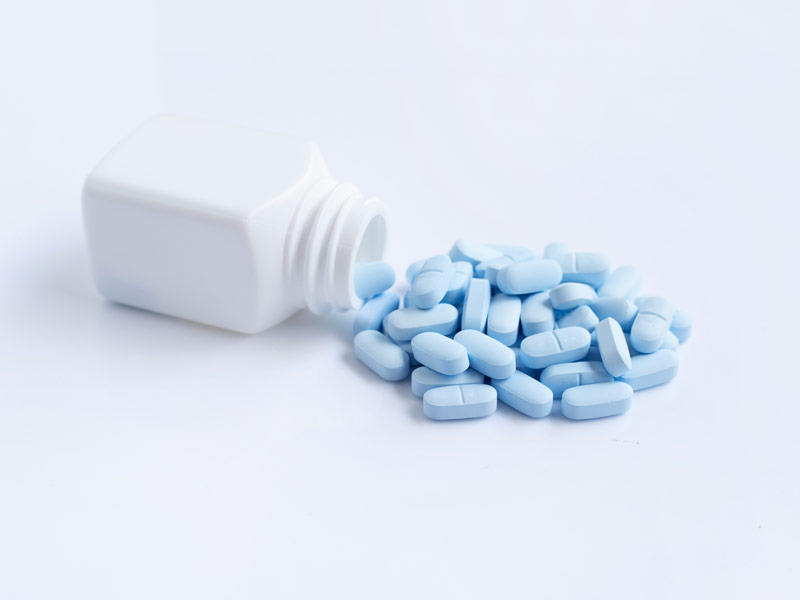Comments Open on Call for PrEP for Higher-risk Patients
Jan. 5, 2023, 1:22 p.m. News Staff — Less than four years after the U.S. Preventive Services Task Force issued its first-ever recommendation focused specifically on pre-exposure prophylaxis to prevent HIV infection, the task force is asking family physicians and others to comment on an updated draft recommendation statement and draft evidence review.

The draft — given an A grade, the task force’s highest — recommends that clinicians prescribe PrEP with effective antiretroviral therapy to people at increased risk of acquiring HIV. The task force will consider comments on the draft recommendation statement and draft evidence review that are submitted by 11:59 p.m. ET Jan. 17.
The recommendation, which is consistent with the original 2019 recommendation, would apply to adolescents and adults who are not infected with HIV and are at increased risk of infection. Specifically, the draft calls for PrEP to be considered for
- sexually active patients who engaged in anal or vaginal sex in the past six months and who also had a bacterial sexually transmitted infection in the past six months, a history of inconsistent or no condom use with people of unknown HIV status, or a sexual partner who has HIV; and
- patients who inject drugs, and have a partner who injects drugs and has HIV or shares injection equipment.
The draft calls for clinicians to consider PrEP based on these criteria for people who engage in transactional sex (including commercial sex workers or people trafficked for sex work), as well as sexually active transgender men and women.
About 1.2 million people in the United States currently have HIV, and roughly 13% of those with HIV don’t know that they are infected. The CDC estimates that nearly 31,000 new diagnoses of HIV infection occurred in 2020, and the actual number is thought to be higher due to reduced access to testing and health care during the COVID-19 pandemic.
Story Highlights
Choices for PrEP
Task force member John Wong, M.D., noted in a USPSTF bulletin that “the availability of multiple effective PrEP medications is great news for patients and a positive step to helping reduce the impact of HIV in the United States.”
Several FDA-approved medications are available as PrEP to reduce the risk of sexually acquired HIV infection, including oral tenofovir disoproxil fumarate-emtricitabine and injectable cabotegravir.
Oral tenofovir alafenamide-emtricitabine is also approved by the FDA for at-risk adults and adolescents to reduce the risk of sexually acquired HIV infection, excluding those who are at risk from receptive vaginal sex because its effectiveness in this population has not been evaluated.
Overall, an evidence review found that oral PrEP with tenofovir disoproxil fumarate, either alone or with emtricitabine, was associated with a decreased risk of HIV infection compared with placebo or no PrEP. There was also a strong association between higher patient adherence to PrEP and greater efficacy in preventing HIV infection.
Oral tenofovir alafenamide-emtricitabine was found to be noninferior to oral tenofovir disoproxil fumarate-emtricitabine in men who have sex with men, with some positive short-term effects on bone mineral density but negative effects on lipid parameters and weight gain.
Long-acting cabotegravir was associated with decreased risk of HIV infection compared to oral tenofovir disoproxil fumarate-emtricitabine in men who have sex with men, as well as in transgender women and women at higher risk for HIV infection.
While no PrEP medications have FDA approval for reducing the risk of acquiring HIV infection from injection drug use, CDC clinical practice guidelines say people who inject drugs are likely to benefit from any FDA-approved PrEP medication regardless of whether they have an identified risk from sexual activity.
More Research Needed
The task force called for additional research, including on
- whether PrEP is associated with an increased risk of other STIs;
- the effectiveness of PrEP in heterosexual people, people who inject drugs, and transgender men and women; and
- tools to more accurately identify people at increased risk who would benefit from PrEP, and ensuring that these tools include populations that are most at risk.
“Many people who would benefit from PrEP are not receiving this highly effective medication,” said task force member Martha Kubik, Ph.D., R.N. “This is especially true of Black, Hispanic and Latino communities. These inequities must be addressed to achieve the full benefit of PrEP.”